Surgery for a torn meniscus of the knee joint
Knee pain with joint damage is often associated with a torn meniscus. Pathology occurs at any age, but in young people it is usually associated with a knee injury, and in older people with degenerative changes in cartilage structures. A torn meniscus very rarely heals on its own and in most cases requires surgery. An injury left unattended progresses quickly and can lead to serious complications - "jamming" of the joint and disability.
The orthopedics and traumatology department of the K+31 clinic (Moscow) performs surgical treatment of knee joint injuries using modern technologies, as well as rehabilitation after surgery.

specialists

equipment

treatment
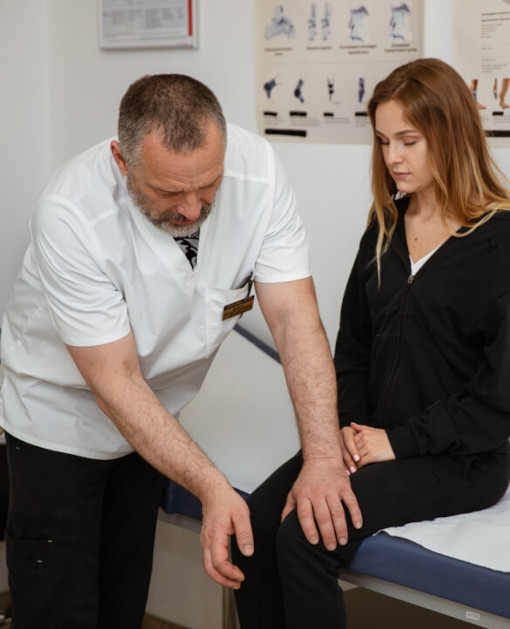
Causes of knee meniscus damage
Meniscus injuries include a crack, a complete rupture, or a tear from the bone surface. This can happen when the knee is twisted sharply in a jump, when the knee is squatted sharply, or when the leg is turned in the wrong position. However, a prerequisite for ruptures is always an injury, a strong load on the knee joint, or its wear.
The meniscus can be injured in the following cases:
- Degenerative changes in cartilage tissue (arthrosis) even without heavy loads in people over 40 years of age
- Injuries in athletes
- Excess weight and muscle weakness
- Improper rehabilitation after injuries or knee surgeries
- Autoimmune diseases (diabetes, rheumatoid arthritis, gout, rheumatism)
Injury is also possible in pathologies of the musculoskeletal system, when the weight is unevenly redistributed to the legs, and the knees experience excessive loads (deformation of the legs, dislocations, fusion of some joints, severe form of valgus flatfoot).
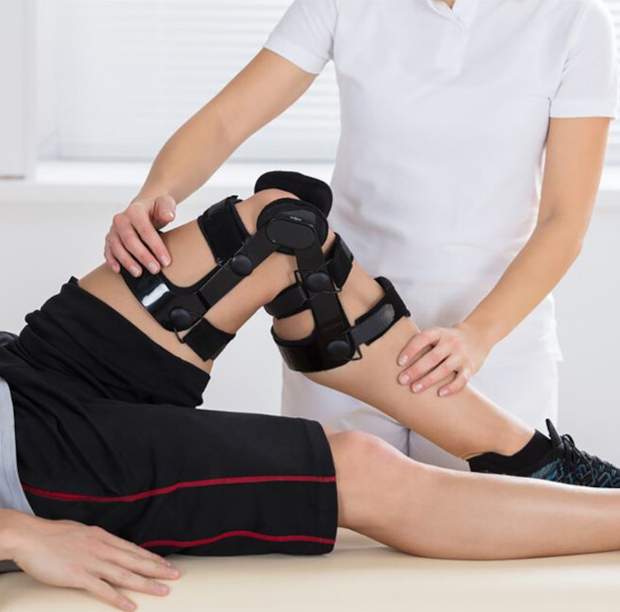
Classification of meniscus injuries
All types of meniscus injury are called a tear. The following types of damage are distinguished:
- By the location of the injury - in the red zone (outer edge), red and white zone (middle edge), in the white zone (inner edge)
- By the location of the tear - vertical, horizontal or oblique, extends towards the outer or inner edge
- By the shape of the tear - "watering can handle" type, radical, patchwork, complex
Depending on the nature of the course, acute and chronic forms of injury are distinguished. The acute period begins in the first few days after the tear. Micro tears left untreated flow into the chronic form.
There is also a classification of meniscus injury by the appearance of the tear on the MRI image according to Stoller. There are 3 types of damage:
- Spherical damage, does not extend to the articular surface
- Crack in the thickness of the meniscus body, without extending to the edge
- Rupture to the articular surface
Trauma can occur in any part of the meniscus, but most often there are ruptures of the medial section, since it is in close contact with the articular capsule and is more mobile. One or both menisci in one knee can be damaged at once.
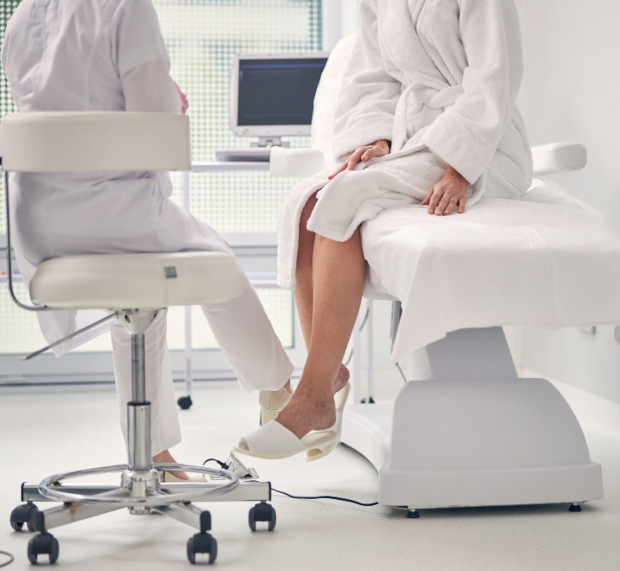
Symptoms of meniscus damage
At the initial stage, with minor injuries, a person may feel slight pain and swelling in the joints after playing sports, “clicks” in the knee.
Clinical picture of a meniscus tear:
- Knee pain that intensifies when going up or down stairs, while running, squatting
- Limping and changing gait to avoid stepping on the sore leg
- Palpation of the joint space (especially inside, behind the knee) causes pain, there may be a seal
- Clicking and jamming in the knee when bending-unbending
- Swelling and an increase in the size of the knee (rare)
The meniscus can tear suddenly, during a sharp movement with twisting in the knee. But sometimes the injury occurs gradually and unnoticed. Many patients with a moderate tear noted that they did not put much stress on the leg.
Diagnosis of meniscus damage
History and examination
During the consultation, the orthopedist interviews the patient, listens to complaints, and studies the results of previous tests or studies. The past illnesses, presence of arthrosis, and limb injuries in the medical history are taken into account.
Examination of the knee joint includes:
- Observation of gait, leg position, squatting
- McMurray test - flexion and extension of the leg at the knee with rotation and displacement of the tibia while lying on the back
- Epley test - flexion of the leg with pressure on the foot and rotation of the tibia while lying on the stomach
- Lachman test for displacement of the axis of the knee joint and cruciate ligament with the leg bent at 30 degrees in a lying position
Functional tests are performed on the couch. If during their implementation the doctor notes a click, limited mobility and pain, he may suspect instability of the meniscus fragment. In this case, the patient is prescribed additional tests.
Instrumental diagnostics
To differentiate the diagnosis of a limb meniscus injury, the following is performed:
- X-ray in two projections (straight and lateral position of the bent leg in a lying position). The image will clearly show cartilage fragments and an intra-articular fracture
- MRI. The method displays the condition of the ligaments and tendons, degenerative changes in cartilage, damage to soft tissues and the presence of aseptic necrosis. But MRI cannot assess the condition of the bones in case of a fracture
- Ultrasound of the joint. The inflammatory process, intra-articular fluid, and soft tissue injury are visualized
If MRI is contraindicated for the patient, it is replaced by computed tomography.
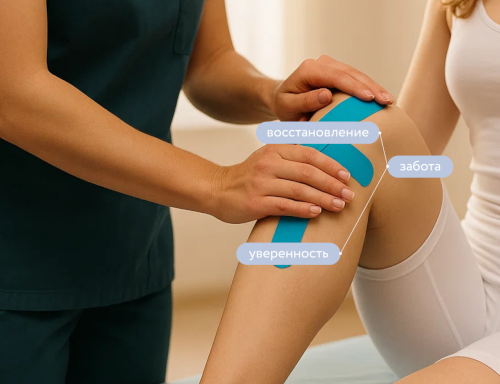
Methods of treating meniscus damage
Spontaneous fusion of the damaged part is possible in rare cases. Basically, these are damages to the outer border of the meniscus, in the red zone with good blood supply. In case of a rupture of the middle part or the inner edge, the rupture does not heal on its own. This is due to the lack of blood supply and poor regeneration of this area of cartilage. Spontaneous healing of the injured meniscus is possible only in children, due to the special anatomy of young joints. In other cases, medical attention is required.
Conservative therapy
Includes medication, physiotherapy and minimally invasive technologies. To alleviate the condition and improve the condition of the knee joints, use:
- Cold compresses. Help relieve swelling and reduce pain
- Exercise therapy. Special simple exercises with muscle tension, turns and leg lifts. Help activate blood circulation in the muscles and avoid stagnation of synovial fluid in the joints
- Minimally invasive methods of regenerative medicine with injections of special substances directly into the joint capsule. Designed to produce collagen in cartilage tissue and stimulate regeneration processes. Hyaluronic acid, chondroprotectors, plasma therapy or stromal-vascular fraction (introduction of stem cells from the patient's own adipose tissue into the joint) are used
Conservative therapy gives good results at an early stage of the disease, and is also used at the rehabilitation stage after meniscus surgery.
Drug therapy
It is carried out to relieve pain, swelling and inflammation, and to speed up the regeneration of damaged intra-articular structures.
Includes taking the following medications:
- Anti-inflammatory and pain-relieving drugs in the form of tablets, injections, ointments and gels
- Glucocorticosteroids in injections
- Chondroprotectors
- Vitamins and minerals
- Venotonics
The doctor prescribes the drugs in a course in each case individually.
Physiotherapy procedures
Physiotherapy helps reduce inflammation, pain and swelling. Such methods as UHF, electrophoresis with medicinal applications, darsonvalization, amplipulse therapy, magnetic therapy have shown good efficiency.
Surgical treatment
Radical treatment method involves eliminating ruptures, partial or complete removal of meniscus tissue. Depending on the type of injury, its location and the degree of duration, the doctor selects the method.
Types of operations:
- Meniscorrhaphy (meniscus suture). A restorative method that is suitable for longitudinal or paracapsular ruptures ("watering can handle") in the area of good blood supply. The technique of internal longitudinal suture or transverse suture from the inside out / outside in is used. It is performed on fresh injuries
- Arthroscopic prefixation of the root. It is performed when the meniscus is torn at the site of attachment to the ligament. It is highly complex and requires the use of implants for strong fixation of the ligament
- Partial resection. Suitable for large ruptures of cartilage tissue, when part of the meniscus can be preserved. During the operation, the damaged area is removed, and the remaining cartilage is smoothed
- Meniscectomy. The surgeon removes the entire meniscus in cases where other methods are impossible. It is used for arthrosis or multiple ruptures
- Arthroscopic chondroplasty. It is used for dystrophic changes in cartilage tissue with the separation of fragments of the damaged meniscus. The surgeon removes fragments, levels the surface and smoothes the edges of the cartilage, restoring its anatomical structure
- Meniscus prosthetics. It is performed in case of complete removal of the destroyed cartilage and its replacement with an internal prosthesis. After meniscectomy, an artificial "cap" is placed on the exposed surface of the tibia, which will act as a shock absorber in the joint
Most often, partial resection and meniscus suture, as well as their combination, are used. These methods allow preserving the patient's own cartilage tissue and avoiding the development of complications. In some cases, the meniscus transplant method is used.
Surgery for meniscus damage
In modern surgery, abdominal surgical interventions on open joints are practically not performed. They have been replaced by the arthroscopy method, in which access to the meniscus occurs through small punctures instead of external incisions. This significantly reduces the level of trauma and the risk of complications, and less time is required for rehabilitation.
During surgery, an arthroscopy tube is inserted into the puncture at the site of the joint projection
- Dzhanelidze T. D.; Vasilyeva T. N., Naumov E. V., Kolos P. G. Possibilities of magnetic resonance imaging in the diagnosis of knee joint injuries // Chief Physician. - 2008. - No. 1-2 (17). - P. 30-31.
- Atlas of anatomy. In 4 volumes. Volume 1. The doctrine of bones, bone joints and muscles // edited by R. D. Sinelnikov. - M: Novaya Volna, 2018. - P. 222-229.
- Orlyansky V., Golovakha M. L. Guide to arthroscopy of the knee joint. - 2nd ed., suppl., revised. - M., Fintrex, 2016. - P. 43-73.
- Postarthroscopy Osteonecrosis of the Knee: Current Concepts / Francesco Di Caprio, Renato Meringolo,1 Maria Adiletta Navarra, Massimiliano Mosca, Lorenzo Ponziani // Joints. — 2017; 5(4): 229-236.

This award is given to clinics with the highest ratings according to user ratings, a large number of requests from this site, and in the absence of critical violations.

This award is given to clinics with the highest ratings according to user ratings. It means that the place is known, loved, and definitely worth visiting.

The ProDoctors portal collected 500 thousand reviews, compiled a rating of doctors based on them and awarded the best. We are proud that our doctors are among those awarded.
Make an appointment at a convenient time on the nearest date
Price
Other services

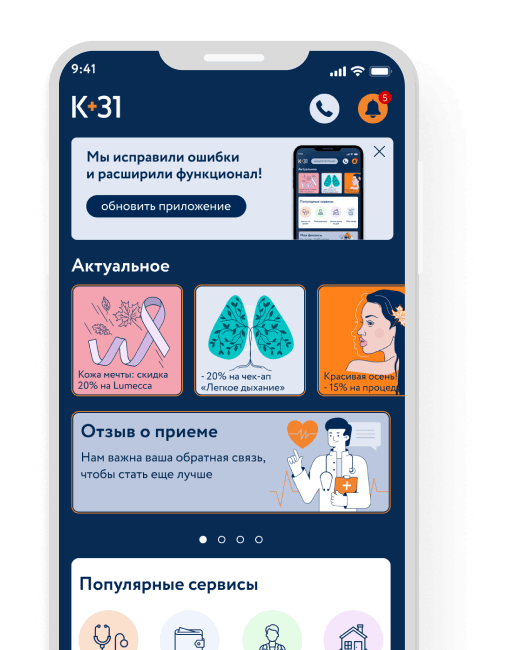
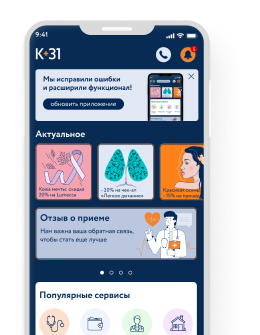



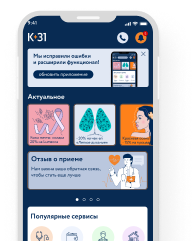
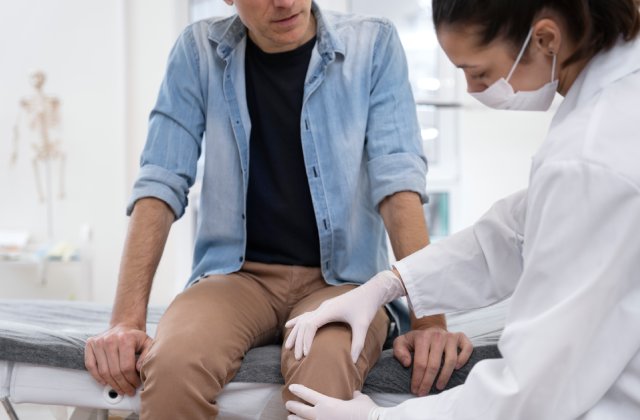
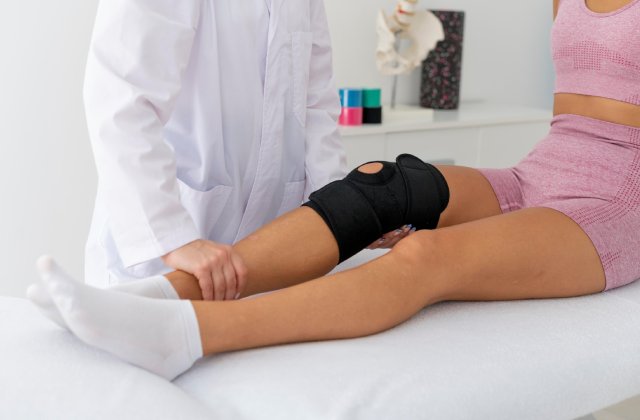
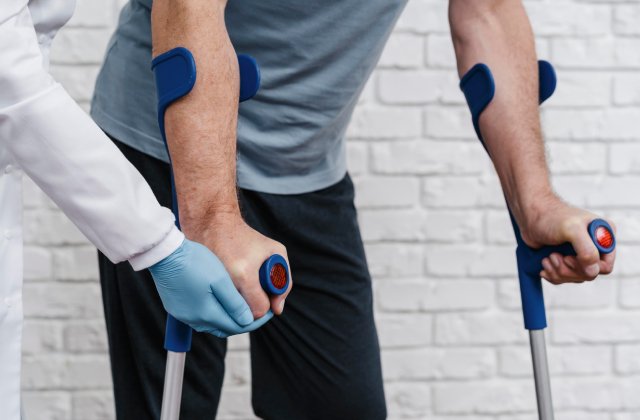



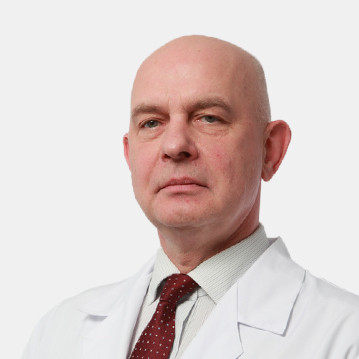




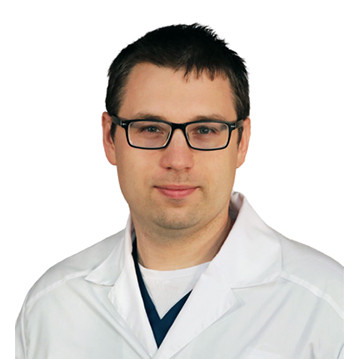
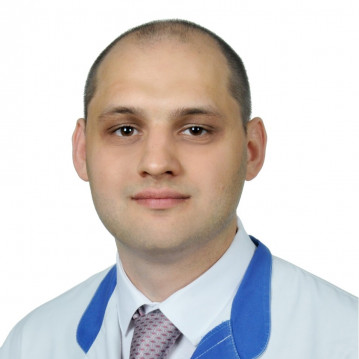




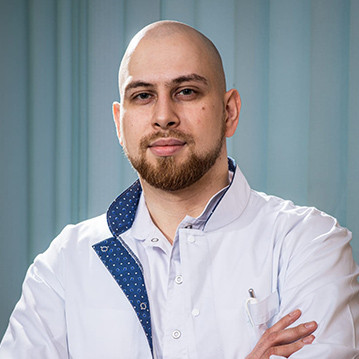
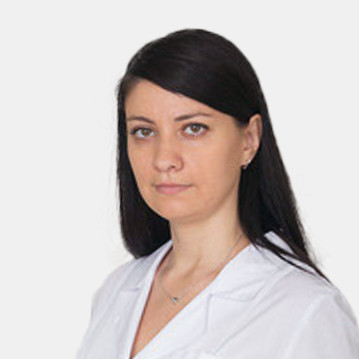
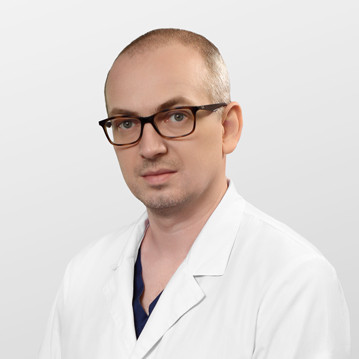

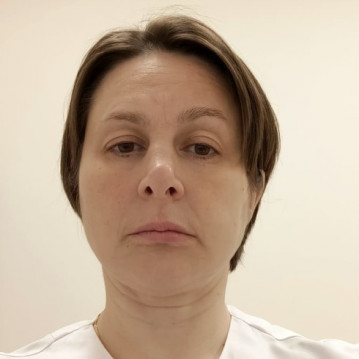

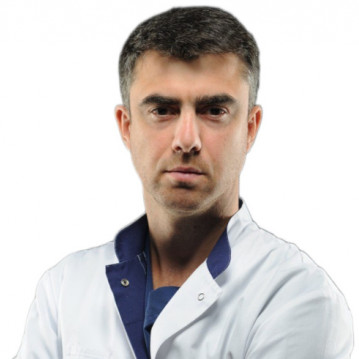





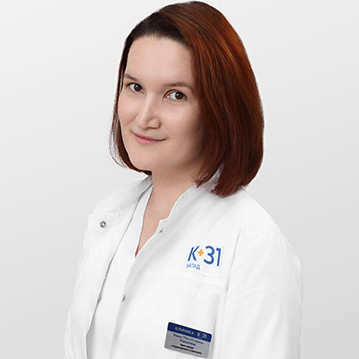



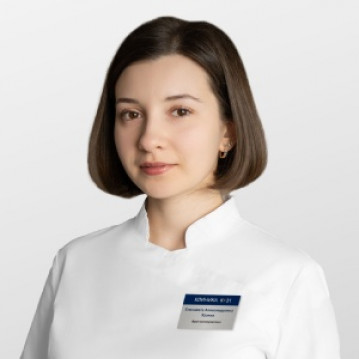


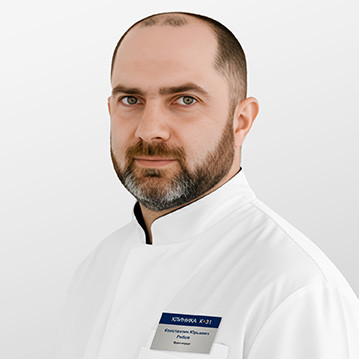

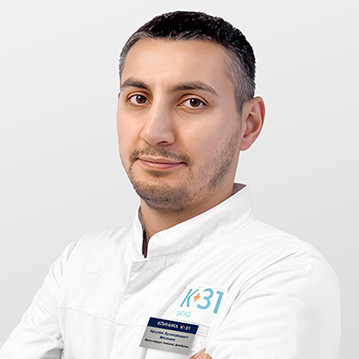
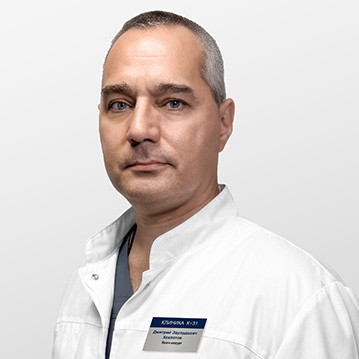
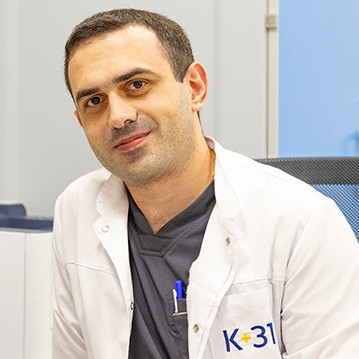
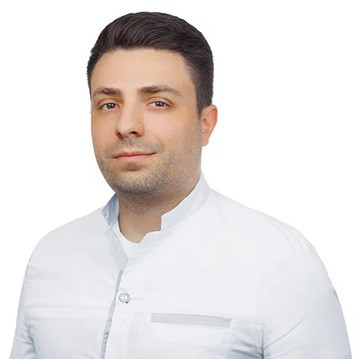
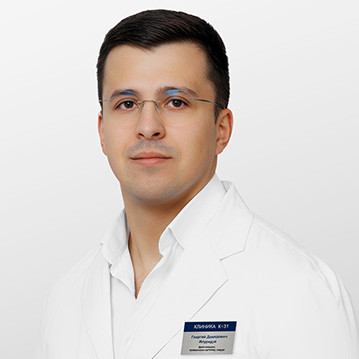





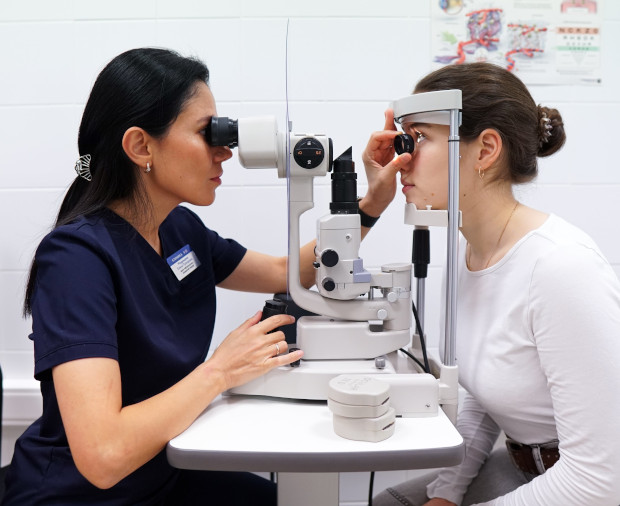
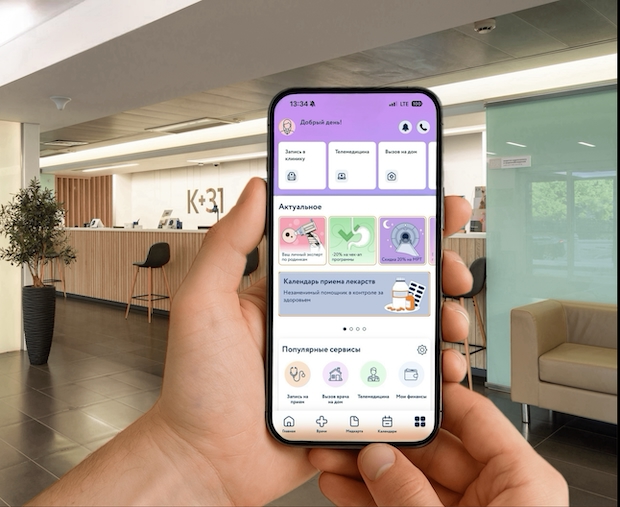



What is a meniscus
The meniscus is a kind of soft "pad" between the ends of adjacent movable bones of the knee, located on the top (plateau) of the tibia. It is a cartilage with collagen fibers, connected to the joint by means of cruciate ligaments.
In each human knee there are two menisci - external (lateral) and internal (medial). They are shaped like a semicircle and consist of a body (on the side), anterior and posterior horns (in the front and back of the knee, respectively). The place of attachment to the ligament is called the root. The shape of the unclosed semicircles is due to the anatomical relief of the condyles of the upper (femoral) bone. Along the outer edge, the menisci are denser and well supplied with blood (red zone). There are no blood vessels along the inner edge, the cartilaginous tissue in this place is thinner and white.
The menisci provide smooth sliding of bones, stabilization and cushioning in the joint when the leg moves in different planes, at the moment of flexion, extension, rotation. When they are damaged, the joint and tendon-muscle complex fail, pain and limited movement appear. A complete rupture of the meniscus of the knee joint can lead to its displacement and blocking.